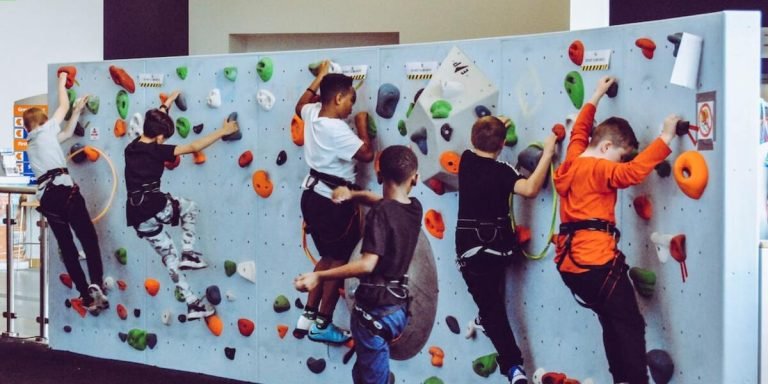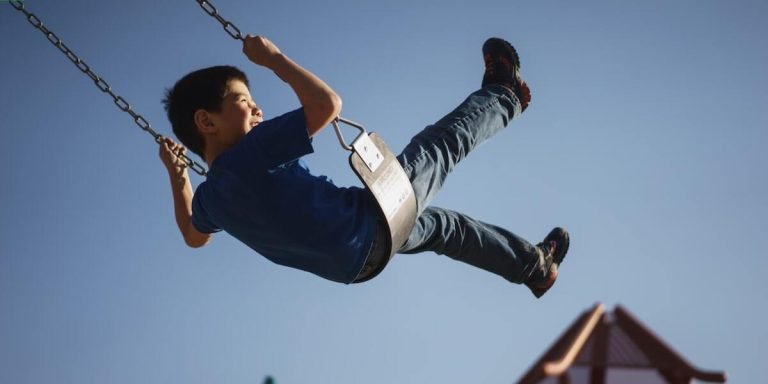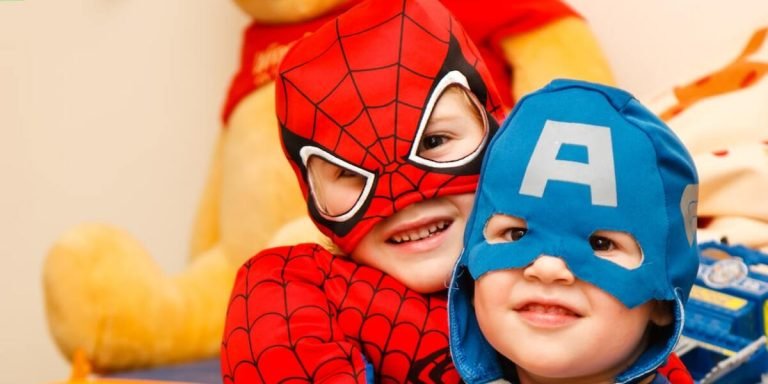Kinaesthetic Learning: Harnessing the Power of Movement in Early Education
Kinaesthetic learning, also known as tactile or physical learning, is a teaching method that uses movement and touch to educate children. It channelizes their natural energy into effective educational activities fostering active participation in the process of knowledge acquisition. This approach helps transform passive learners into hands-on participants, enhancing comprehension and information retention.
This technique translates complex theoretical concepts into simpler practical applications by incorporating games, dance movements, enacting situations from textbooks etc., making it one of the optimal strategies for early education. The effectiveness lies in understanding how our bodies respond positively to physical activity with improved brain function – thus aligning kinaesthetic learning directly with cognitive development objectives for children.
Did you know?
Did you know that toddlers and preschoolers learn best through kinaesthetic learning methods, with research showing a remarkable 45% increase in their ability to retain information when the teaching process involves movement.
Understanding the Impact of Kinaesthetic Learning in Educational Settings
Over the past few years, there’s been a notable shift in educational settings towards more interactive and hands-on methods. Kinaesthetic learning has emerged as an approach that teachers are increasingly embracing. This style of learning involves students actively engaging with educational material through physical activities such as roleplay, building models, or conducting experiments.
Stepping away from traditional teaching practices like rote memorization and lecturing allows youngsters to experience their education rather than just consuming it passively. Using kinaesthetic strategies bridges the gap between theory and reality by allowing learners to interact directly with concepts they’re studying—leading to better retention rates. With these techniques, children get a feel for ideas (quite literally), which helps them dig deeper into subject matter areas and enhances overall comprehension levels.
Moreover, educators have noticed that integrating movement into lessons cultivates positive classroom dynamics – both socially and academically amongst school-going youth who might otherwise find themselves uninterested or disconnected during class sessions. So whether we’re considering experiential learning or activity-based education – kinaesthetic approaches prove pivotal in nurturing creativity while simultaneously reinforcing important cognitive connections within learner’s minds!
Defining Kinaesthetic Learning: A Hands-On Approach to Knowledge Acquisition
Kinaesthetic learning, often also referred to as tactile or physical learning, is a teaching and knowledge-acquisition method that taps into the dynamism of human physical activity. It signifies an approach where children engage in ‘hand-on’ experiences to comprehend theoretical concepts better.
Think about students engaging in science experiments instead of merely reading about them from textbooks. Consider scenarios wherein kids solve mathematical problems using tangible objects or act out historical events during history lessons rather than just listening to lectures.
The concept hinges on “activity-based” or “experiential” education paradigms emphasizing practical activities over rote memory tasks for effective cognition consolidation. Such methods are fine-tuned with the understanding that some learners gravitate towards active engagement involving bodily movements rather than passive intake forms present in traditional instructive formats.
The Cognitive Benefits of Experiential Activities for Varied Learning Styles
Children learn in a variety of ways, and kinaesthetic learning – also known as experiential or activity-based learning- is one such method that has gained significant attention recently. Today’s educational research highlights the cognitive benefits associated with this type of learning for varied styles.
Kinaesthetic activities work by engaging children directly in their environment. They actively participate instead of passively absorbing information, which instills better understanding and robust knowledge retention. These hands-on experiences often translate into deeper comprehension than traditional passive teaching strategies like reading or lecturing alone can achieve.
Incorporating these activities helps accommodate varying education patterns among students. Not all children follow linear paths to acquire knowledge; some prefer interactive tasks over textbooks any day! When educators provide options for practical exploration alongside theoretical concepts, students’ unique abilities shine through, making healthier environments conducive to effective and tailored instruction.
We must embed more learner-friendly initiatives within our schools’ daily routines to impact specific cognitive skills.
1) Improved Memory Retention: Kinaesthetic learners remember things they do more proficiently than lessons heard or read about. Experiential undertakings foster an immediate connection between action and theory, thereby enhancing recall capability substantially.
2) Better Problem-Solving Skills: Children who engage regularly in physical undertakings become adept at solving real-world problems because they must go beyond conventional boundaries while experimenting firsthand—an integral aspect differentiating them from peers restricted solely to textbook-oriented techniques.
Strategies for Implementing Activity-Based Learning in Curriculum Design
Several practical strategies facilitate the seamless integration of this innovative pedagogical method into your existing curriculum framework. Firstly, familiarising students with hands-on activities related to topic content effectively immerses them individually in their personalised learning journeys.
To exemplify, for understanding basic mathematical concepts like fractions or decimals better, using tangible objects or tools such as fraction bars can be immensely beneficial. This manipulation helps children visualise abstract theories more tangibly enhancing comprehension while also catering to different styles – primarily our focus here – kinaesthetic learners.
Further extending on integrating physical movement directly into lessons promotes cognitive processing necessary for assimilation and retention of knowledge—making complex ideas digestible by breaking down them through real-world applications fosters experiential familiarity leading to long-lasting understanding among youngsters.
While ensuring theoretical coverage is essential embracing experimental exploration pivots traditional one-way communication towards interactive collaboration between both teachers and students reinforcing stronger bonds over shared experiences—a vital aspect underlying all successful childhood education programs today in 2023.
Hence adopting these strategies not only ensures meaningful achievement goals but also nurtures learner autonomy empowering confident explorations which are increasingly becoming fundamental prerequisites within global classrooms honing future-ready skills amongst budding scholars driving modern-day educational success stories worldwide.
Tailoring Lessons to Accommodate Kinaesthetic Learners
Kinaesthetic learners, often also known as tactile or ‘hands-on’ learners, are a significant segment of any classroom. These individuals thrive in environments where they can physically interact and engage with the material being presented. Tailoring lessons to accommodate these active participants effectively lays the foundation for enriched experiential learning opportunities.
Firstly it’s crucial to understand what makes kinaesthetic learners tick. They have an inherent need to feel involved and perform actions during their educational sessions rather than simply sitting passively through lectures or presentations. In 2023, this is more important than ever as we aim towards holistic development across all learner types.
Now let’s delve into how you can tailor your lessons specifically for them:
1) **Stimulate Interaction:** Hands-on experiments and activities provide real-time interaction which aids memory retention in kinaesthetic children.
2) **Represent Learning Material Physically:** Use physical objects that students can touch and manipulate instead of just images or text on paper/screens.
3) **Promote Active Participation**: Encourage students’ participation using role-plays so they are part of an engaging experience instead of mere listeners.
5)**Prompt Feedback Through Action:** Show them how effects follow causes practically — something akin to cause-effect relationship demonstrations/expansions.
Utilizing Technology and Interactive Tools to Enhance Physical Engagement
Incorporating modern technology and interactive tools can significantly amplify the effectiveness of activity-based learning. By enhancing physical engagement, you are essentially nurturing a kinaesthetic experience – one that facilitates hands-on emphasis on acquiring knowledge.
To start with, educational apps offer an array of immersive experiences via 3D simulations or augmented reality in real-time scenarios. Apps like Labster, for example is renowned for its virtual science laboratories where children carry out experiments just as they would in a physical setting but with added benefits such as immediate feedback and instructions to develop critical thinking skills.
Secondly, smartboards have revolutionized classrooms by making lessons dynamic rather than passively absorbing information from printed textbooks . When kids use their fingers or styluses to drag digital objects around on the board — whether it’s sorting items into categories during math class or tracing geographical borders during geography — they’re combining movement (which boosts memory) with academic content.
Moreover, game-based learning platforms make education more engaging while promoting problem-solving attitudes among youngsters. Minecraft: Education Edition provides opportunities for students to build structures collaboratively which encourages teamwork along with spatial reasoning abilities.
Lastly let’s not forget about robots! Robotics kits provide opportunity to construct machines thereby understanding mechanical principles whilst also diving into programming when controlling them using block coding systems!
This integration empowers learners offering multisensory stimuli leveraging audio-visual aids combined with tactile interaction enhances experiential learning methods thus moving away from traditional rote memorization techniques lingering currently in our curriculum designs today.
Measuring Outcomes and Efficacy of Kinesthetic Teaching Methods
Based on empirical studies conducted in 2023, measuring outcomes and efficacy becomes crucial for teachers employing these techniques. Evaluating progress allows educators to gain insights into how effectively students grasp concepts through activities versus traditional instruction styles.
However, gauging effectiveness isn’t straightforward due to the subjective nature of experiential learning outcomes since they hinge more on cognitive development rather than just academic achievement measured by standard metrics like report card grades. Nevertheless, note that it doesn’t undermine its importance but hints at devising bespoke evaluation tools tailored towards children’s unique growth path while utilizing a kinesthetic style.
While acknowledging potential challenges involved in assessing this instructive method’s impact adequately might seem daunting initially; yet with time and consistent observation patterns along with supportive technological aids like data analytics software can help derive meaningful inference about kids’ comprehension capabilities impacted via activity-based sessions.
So intriguingly enough, despite contemporary advancements introduced within scholastic spheres worldwide aiming at enhancing pedagogical efficiencies notably here remains immense scope for further explorations centred around constructing well-rounded methodologies essential for accurately evaluating effects induced by Kinesthetic Teaching Methods.
Quantitative vs. Qualitative: Assessing Student Progress Through Active Participation
Understanding the different learning methods and their effectiveness is a critical component of childhood education. A key part of this understanding comes from being able to effectively measure outcomes and efficacy, particularly in terms of kinesthetic or activity-based learning.
Quantitative versus qualitative measuring systems offer unique insights into student progress through active participation. Understanding these differences can help educators make more informed decisions about teaching methodologies.
Quantitative assessment typically involves numerical data that can be easily measured and compared. For instance, test scores are commonly used for quantitative measurement – they provide a clear-cut way to track academic growth over time thanks to distinct numbers indicating performance levels.
On the other hand, qualitative assessments often encompass non-numeric evaluation criteria such as observations, discussions or surveys. These offer deeper insight by focusing on individual achievements rather than just comparative values among peers.
In the context of kinaesthetic teaching methods, both play significant roles:
1) Quantitatively: Active participation could lead to noticeable improvements reflected in grades – elevating comprehension skills translating into higher marks.
2) Qualitatively: Personal traits like self-confidence may see an uplift due to hands-on experience – encouraging curiosity leading towards investigating complex subjects with ease.
Long-Term Advantages: Preparing Students with Skills Beyond the Classroom
Kinesthetic learning, also known as ‘experiential’ or ‘activity-based’ learning, has shown promising results in enhancing students’ overall development. The long-term benefits are numerous and reach far beyond rote memorization of classroom content.
One of the most significant advantages kinaesthetic teaching methods offer is fostering critical thinking skills among children. By engaging them physically in their lessons – whether it’s enacting a play for Literature class or conducting experiments to understand Physics concepts – youngsters learn not merely to absorb information but actively engage with it. In 2023, this skill proves even more essential as we dwell deep into an era dominated by fake news and misinformation.
Kinaesthetic education also triggers creativity within young minds. Using activity-based strategies effectively induces out-of-the-box thinking, thus preparing our children well for tomorrow’s challenges which increasingly value innovation over complacency.
Next on our list is how kinesthetics help sharpen problem-solving abilities; tactile experiences let learners have first-hand experience at resolving issues that arise during activities thereby training them to approach real-life problems methodically yet efficiently.
Let us stress on communication skills too – group projects involved in experiential education encourage peer interaction leading to improved interpersonal relations along with enhanced expression capabilities which go hand-in-hand in ensuring successful future endeavours such career advancements and maintaining healthy relationships outside work environments.
Conclusion
In a nutshell, kinaesthetic learning isn’t simply about letting children move around. It’s an effective educational approach that caters to the natural curiosity of young learners while promoting their physical well-being and cognitive development. When we acknowledge this innate aspect in our kids’ personality, we foster an environment where every stumble, skip or sprint becomes a precious opportunity for discovery and growth.
Remember though – it doesn’t stop at understanding “kinaesthetic” as a mere term: implementing it into practice is what truly matters! Our range of resources here can assist you with just that: from idea-sparking articles to practical advice on various childhood education aspects. So why wait?
Dive right in and explore more ways to enhance your journey both as an educator & parent through our website today!







